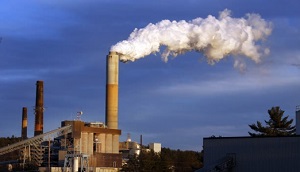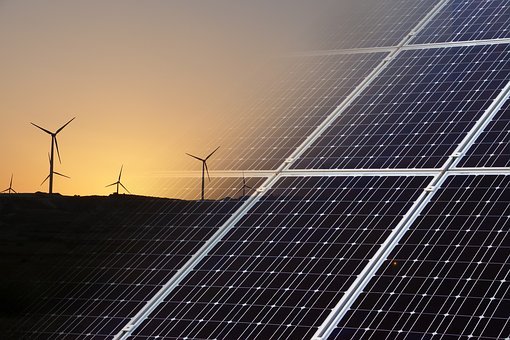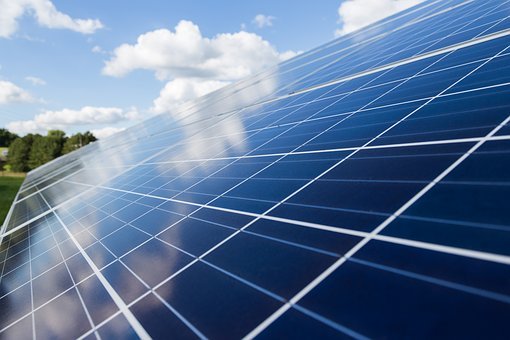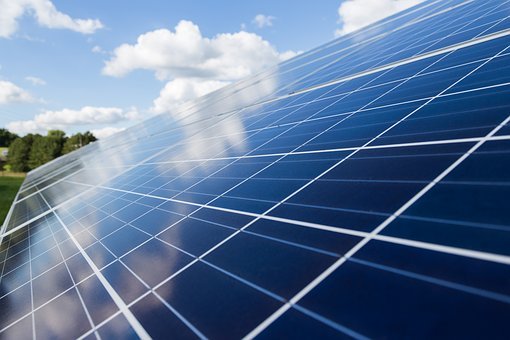Emission Reduction Strategies
Policies used by the State of New Hampshire to reduce air pollutants and greenhouse gas emissions from electric energy consumption.
 New Hampshire has been engaged for decades in an ongoing effort to protect public and environmental health by reducing air pollution resulting from energy consumption in all sectors. In the past 15 years, programs have been developed to support the reduction of greenhouse gas emissions, primarily carbon dioxide (CO2), which are the primary cause of global warming and climate change.
New Hampshire has been engaged for decades in an ongoing effort to protect public and environmental health by reducing air pollution resulting from energy consumption in all sectors. In the past 15 years, programs have been developed to support the reduction of greenhouse gas emissions, primarily carbon dioxide (CO2), which are the primary cause of global warming and climate change.
The programs have focused on reducing the overall demand for energy as well as reducing the emissions associated with providing the energy that is needed for heat and power in buildings. This includes the Energy Efficiency Resource Standard (EERS), which sets targets for energy efficiency (EE) state wide, supports the expansion of EE to reduce energy use further, as well as supports renewable energy (RE) projects to increase the supply of local clean energy. The impact of EE and RE is reduced emissions that directly support the protection of public and environmental health.
While energy conservation and energy efficiency play an important role in reducing the total amount of energy consumed by our economy, other programs in the state have been developed to support the transition to energy sources that are lower emitting. Read more about New Hampshire’s reduction programs below. Learn more about New Hampshire’s Air Emissions Trading Program (Market Based).
Related Content
Regional Greenhouse Gas Initiative (RGGI)
New Hampshire and nine other states in the Northeast and Mid-Atlantic are participating in the Regional Greenhouse Gas Initiative (RGGI). RGGI is a regional effort to implement a flexible, market-based program to reduce carbon dioxide (CO2) emissions – the major cause of global warming – from power plants in the Northeast and Mid-Atlantic states. The RGGI states have adopted laws and/or regulations to establish a framework for implementing RGGI in their respective states.
RGGI regulations in New Hampshire are:
- Env-A 4600 Carbon Dioxide (CO2) Budget Trading Program
- Env-A 4800 Carbon Dioxide (CO2) Allowance Auction Programs
- Section 125-O:20-29 Carbon Dioxide Emissions Budget Trading Program
The proceeds from RGGI are used to fund several emissions reduction initiatives in the state:
- Energy Efficiency Fund
The Energy Efficiency Fund is a dedicated fund created by New Hampshire legislation, RSA 125-O: 23.
- Energy Efficiency Programs
As part of the Restructuring Act, RSA 374-F:3 X, the electric utilities in the State of New Hampshire have established a set of energy efficiency programs designed for statewide implementation in the service territories of the utilities regulated by the Public Utilities Commission (PUC). A variety of programs exist, serving both residential and commercial and industrial customers. Funds resulting from the energy efficiency portion of the Systems Benefit Charge and Forward Capacity Market auction have been augmented by additional monies from the Regional Greenhouse Gas Initiative (RGGI).
- RGGI, Inc. Investments of Proceeds
The RGGI states issue CO2 allowances, which are distributed almost entirely through regional auctions, resulting in proceeds for reinvestment in strategic energy and consumer programs. Programs funded with RGGI investments have spanned a wide range of consumers, providing benefits and improvements to private homes, local businesses, multi-family housing, industrial facilities, community buildings, retail customers and more.

Energy Efficiency & Sustainable Energy Board
The Energy Efficiency & Sustainable Energy (EESE) Board was established pursuant to RSA 125-O:5-a, effective October 1, 2008. It was created by the New Hampshire legislature “to promote and coordinate energy efficiency, demand response and sustainable energy programs in the state.” The EESE Board is administratively attached to the PUC.

Renewable Energy Fund (REF)
The Renewable Energy Fund (REF) was created in 2007 as a component of the Renewable Portfolio Standard (RPS) law, which mandates that 25.2% of the state’s electricity come from renewable sources by 2025. Each year electric service providers comply with the law by acquiring Renewable Energy Certificates (RECs), representing electricity generated from renewable sources. If they can’t get sufficient quantities of RECs for a given compliance year, they are required to make Alternative Compliance Payments (ACPs), which provide the funding for the REF.

Renewable Portfolio Standard
A Renewable Portfolio Standard (RPS) is a policy designed to influence the development of renewable resources and technologies. New Hampshire’s RPS policy requires each supplier of electricity in New Hampshire to demonstrate they are obtaining about 25% of their electricity from renewable energy resources by the year 2025. Examples of renewable resources include wind, biomass, hydropower, solar, methane gas, geothermal and fuel cells.







